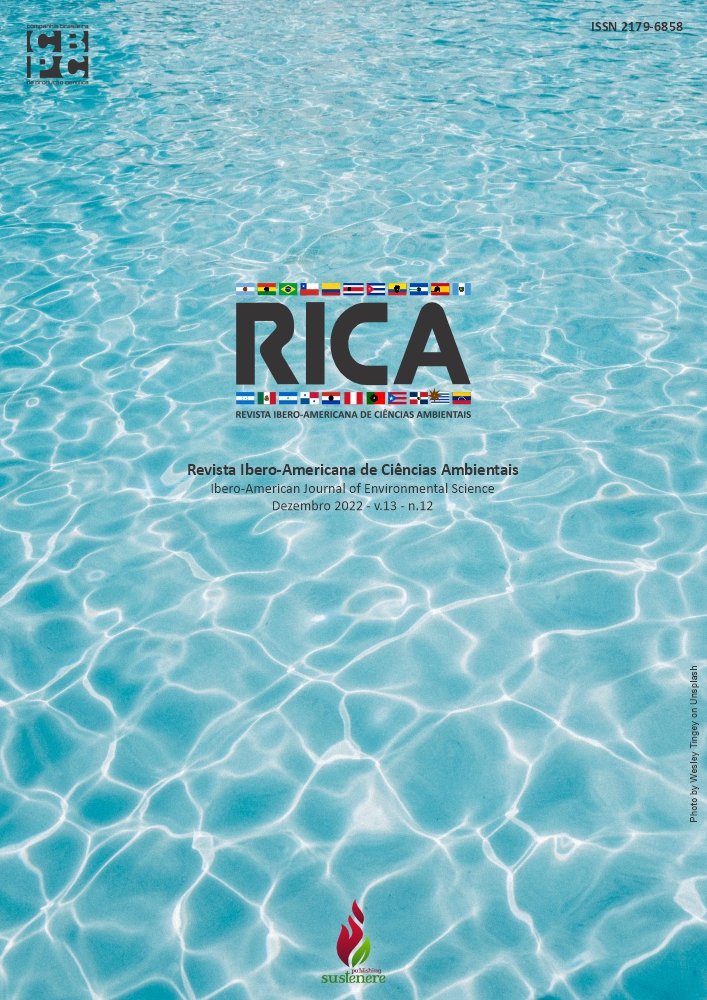Diagnosis of the fragility of Atlantic Forest fragments due to anthropic actions
DOI:
https://doi.org/10.6008/CBPC2179-6858.2022.012.0004Keywords:
Landscape Ecology, Atlantic Forest, Landscape Metrics, São Vicente FérrerAbstract
The Atlantic Forest has a great importance in the environmental balance, however, the degradation of its areas has been occurring continuously, especially as a result of the spatial growth of anthropic activities such as street and urban uses, in spatial brazilian municipalities of small and medium size. From this perspective, the research aimed to diagnose the fragility of atlantic forest fragments due to anthropic actions in its surroundings. The photointerpretation methodology was used in Landsat 5 and Landsat 8 satellite images, available in the USGS image catalogue, referring to July 28, 1984 and January 23, 2021, respectively. It was applied in SPRING 5.5.6, the enhancement in the three channels of the visible spectrum. The areas corresponding to rural use, built area, water bodies, exposed soil and remaining vegetation (Montophilous Forest and Montland Ombrófila Forest) were vectorized based on the roughness and color characters compatible with the targets. This vectorization was done in Qgis 3.16.5 and the files were saved in shapefile '.shp'. The results indicate that between 1984 and 2021 there was a predominance of exposed soil corresponding to 58.92% and 66.81% of the total area of the municipality, respectively, with an average area of 72.82 km². The landscape in 1984 stands out for a greater rural use, which corresponds to 13.02% of the total area of the municipality, in 2021 the rural use represents 11.63%, being noticeable the extinction (-1.39%) and displacement of some areas, with an average area of 14.28km². In turn, there was an expansion of the built area, from 0.90% to 2.02% of the total area of the municipality in the range of 1984 to 2021, which obtained an average area of 1.69 km². The data show that forest areas had a reduction of 7.25%, in 1984 the areas of preserved Atlantic Forest represented 26.03% and in 2021 this represents only 18.78%, with an average area of 25.94km². Considering the structure of the landscape and its configuration in front of the Atlantic Forest, present in São Vicente Férrer, it is evident the absence of public policies and conservation actions. Landscape metrics were fundamental tools for the analyses developed in this research. These parameters are of great value for the creation and implementation of strategies for the conservation and recovery of the Atlantic Forest of São Vicente Férrer.
Downloads
Downloads
Published
Issue
Section
License
Copyright (c) 2023 Ibero-American Journal of Environmental Sciences

This work is licensed under a Creative Commons Attribution-NonCommercial-NoDerivatives 4.0 International License.
The CBPC - Companhia Brasileira de Produção Científica (Brazil CNPJ: 11.221.422/0001-03) the material rights of the published works. The rights relate to the publication of the work anywhere in the world, including rights to renewals, expansions and dissemination of the contribution, as well as other subsidiary rights. All electronically published works may subsequently be published in printed collections under the coordination of this company and / or its partners. The authors preserve the copyright, but are not allowed to publish the contribution in another medium, printed or digital, in Portuguese or in translation.









